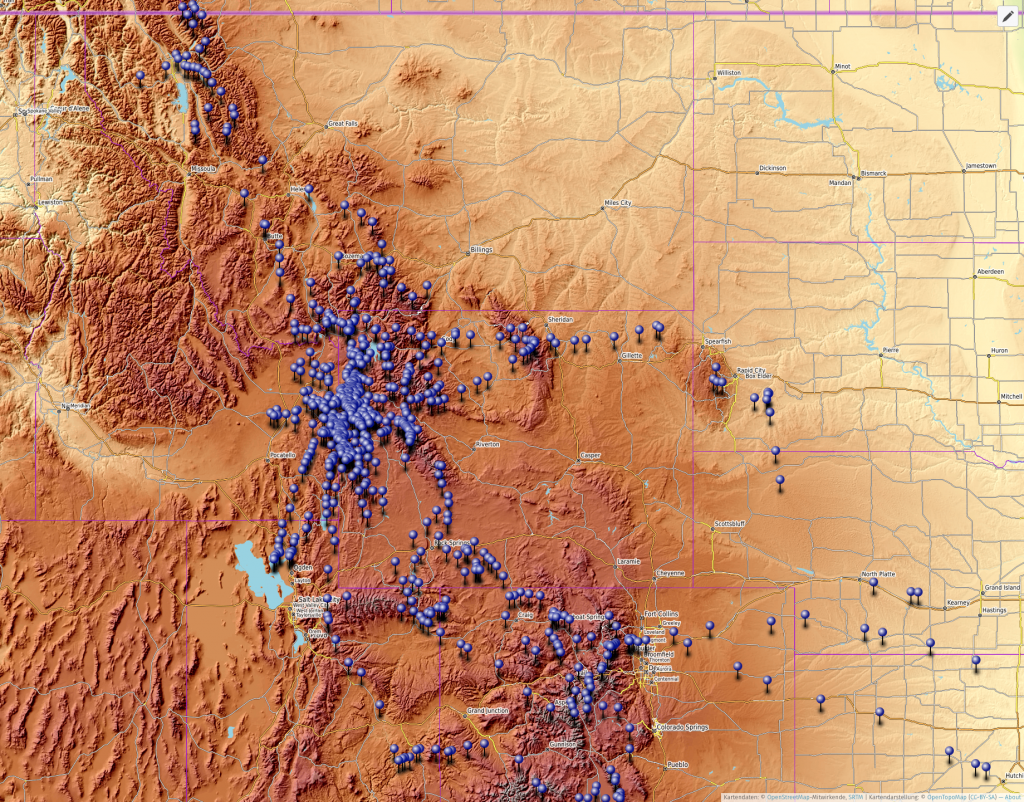This post originally ran in West Yellowstone News.
Summer in Yellowstone is a season of continual transition, one that surprises me each time that I view it. Situated at high altitude, it is no mystery that Yellowstone is extremely snowy and cold in the winter, so much so that the park is substantially closed except for snow sports for the majority of the year. As spring rolls around, snow melts at an increasingly fast rate, even though late season snowfalls can still happen, and in rare instances, some of the mountains can get snow any time of year.
Like most of the West, summer arrives at the flip of a switch. Terrain known for survival in the cold becomes incredibly hot under the strong, high-altitude sun, and famous Western dry air prevails for the majority of the time, so much so that it is a wonder that it rains at all. Then, on certain occasions, it rains profusely, bringing the bite of cold air back, leaving clueless tourists to fend off hypothermia while nursing yesterday’s residual sunburn. Hopefully a bear hasn’t broken into the same person’s camping food while meteorological misery abounds.
From the air, it is evident that the colors of the park are in continuous evolution during the course of the summer. For those who visit for days or a week at a time, the color of Yellowstone viewed on that trip is mistaken for the park as a whole, denying a visitor the opportunity to understand how variable the colors of Yellowstone are. Further, the view from the ground lacks the magnitude for year-round dwellers that can be afforded from the air. A few dried out plants here and there can be difficult to distinguish from the continuity of forest.
As the white of winter melts off, the brown of spring replaces it. Brown gives way to a green hue as summer approaches. When the switch is ideologically flipped to summer heat, flowers burst forth amongst a deep and profound green, the product of the rainy season in late spring and early summer as well as residual soil moisture from snowmelt. For those that like to avoid snowfall, cold, and anything associated with winter, this is the prettiest time of year.
By midsummer, yellow and gold mixes with the green as the heat of summer wears on. Even in “rainy” years by Western standards, the long-term heat of the sun and dryness of the air makes life for grasses and small deciduous plants difficult, and they begin various seasonal die-offs. By late August, golden is the dominant color, which begins to give way to a late season brown, which has more of a wheat-like appearance than the brown of early spring. There is still life in the final stages of summer, even though it is one of struggle against the elements and the heat.
Not too long after summer transitions from vibrancy to tired age and fatigue, the switch flips, fall colors set in, and winter follows on its heels with dramatic speed and intensity. Don’t let the weather and color of today fool you. Yellowstone changes its clothes on a regular basis.
Garrett Fisher photographs from his 1949 Piper PA-11 aircraft, has published 9 books, and blogs extensively about his flying at www.garrettfisher.me. He is currently working on two books about Yellowstone from above, the Yellowstone River, glaciers of Wyoming, glaciers of Montana, Grand Teton National Park, and many other projects.
Midsummer color, beginning to turn from green to golden.

Illustrious early summer green. Snake River, southern Yellowstone, Grand Teton on the horizon.



